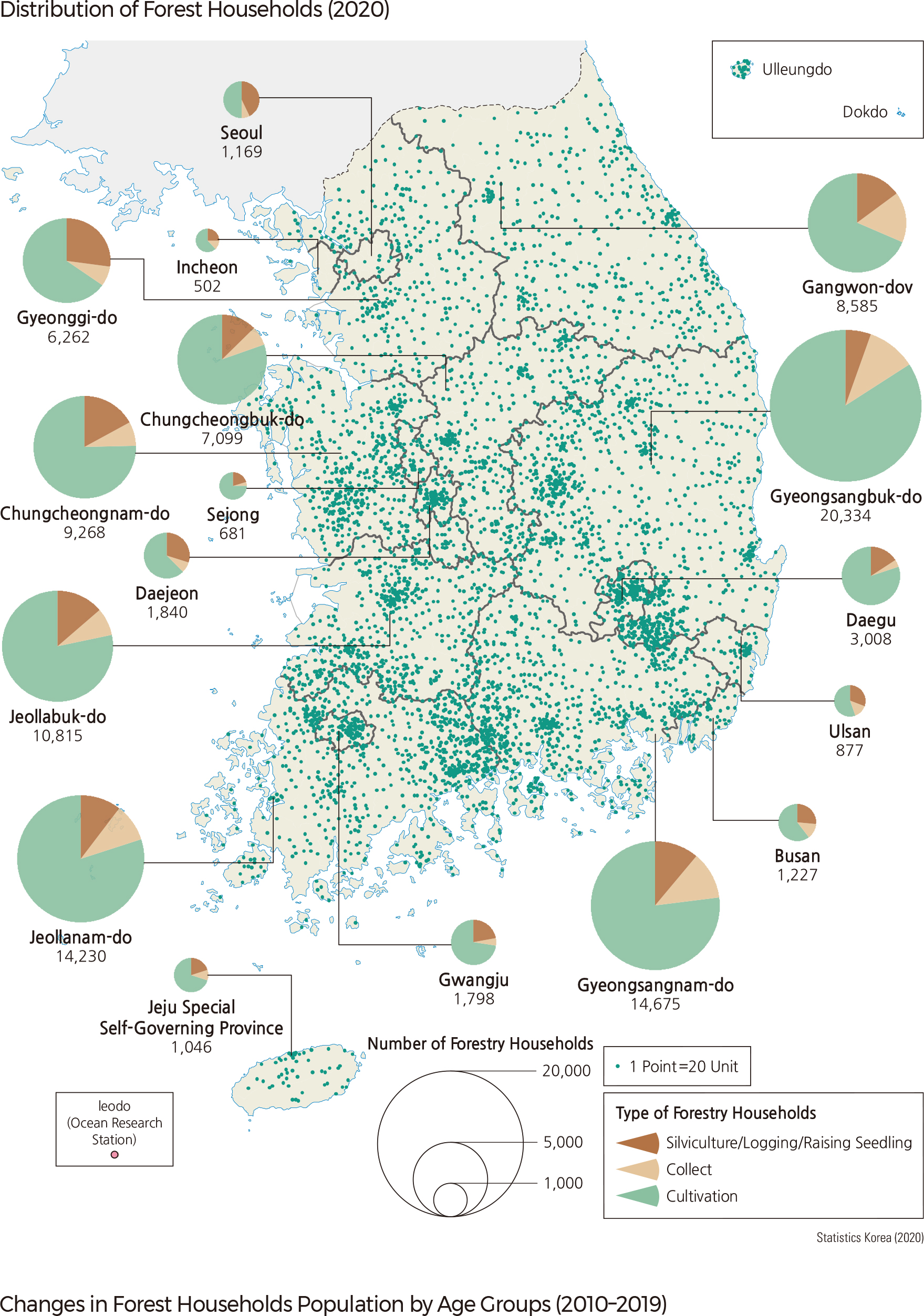English III 2021
The maps of the number of forestry households by region and by types of forest production reveal the overall distribution of forestry in Korea. According to the number of forestry households by region, Gyeongsangbuk-do (20,334 households), Gyeongsangnam-do (14,675 households), Jeollanam-do (14,230 households), Jeollabuk-do (10,815 households), Chungcheongnam-do (9,268 households). According to the number of forestry households by types of forestry management, a cultivation household was the highest (79,173 households), followed by Silviculture/Logging/Raising Seedling (14,090 households), and collect (10,153 households). The proportion of forest land area ranked by descending order was Inje-gun (89.4%), Teabaek-si (88.4%), Samcheok-si (87.9%), and Uljin-gun (85.5%). And the total value of forestry production by region was the highest in Gyeongsangbuk-do (about 1.2 trillion won), followed by Gangwon-do (about 1 trillion won), Jeollanam-do (about 820 billion won), Gyeongsangnam-do (about 760 billion won), and Gyeonggi-do (about 660 billion won). The number of forestry households continues to decrease, like the number of farm and livestock households. In 2019, the number of individuals in forestry households was 178,420 people, compared with 253,656 people in 2010. The diminishing rate was about 29.7%. Moreover, considering the proportion of the forestry household population over 60 has increased continually, there is a need to prepare measures against the aging phenomenon of the forest household population. The production volume by type of forestry product was generally high in the net gross growing stock. Since the net gross growing stock can grow through long-term management, there is a need to prepare mid-to-long-term measures for the sustainability of forest resources. Recently, the short-term forestry products, such as landscaping materials, nuts, medicinal herbs, wild edible greens, and mushrooms, have gradually increased. These forestry products were mainly gathered or picked from the wild in the past. However, in recent years, they have been cultivated in large quantities in the field, resulting in a rapid increase in yield and production value. |



